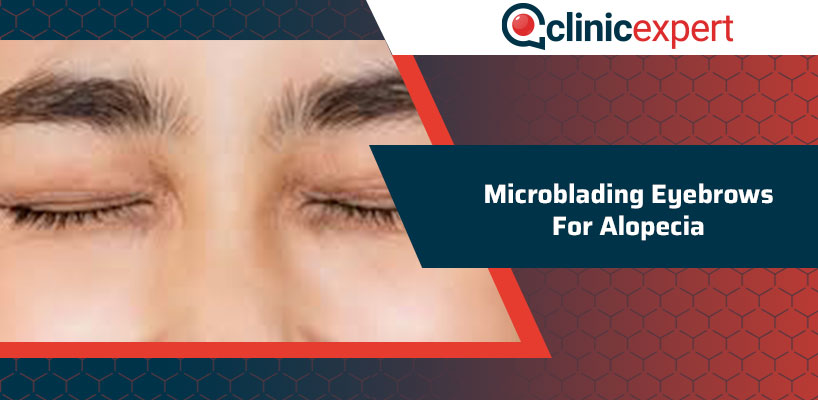Microblading Eyebrows For Alopecia Microblading eyebrows for alopecia is a manual pigmentation method that does not use a pigmentation device. A microblading pen is used. and with attachments in sterile packaging (the so-called “blades”, small needles placed next to one another, from the handle like a small scalpel) that are inserted into the microblading pen.
What is Microblading?
With the help of so-called knives, a frame is created at the place to be processed. This is necessary to obtain an effective image. Then the specified pigment color begins to be eaten on the skin with slight movements. And it is left for about 10 minutes. Thus, both the wound closes and the color becomes more self-revealing. However, this process should not be done anywhere else in the face. Especially women who want to wear heredite makeup should stay away from this method. It is a method that should be applied only for eyebrows. If you have this problem in your hair and you are experiencing baldness, the best method is hair transplant in Turkey.
Who Is Microblading Suitable For?
Microblading of the eyebrows is suitable for everyone who wants beautifully shaped, but still natural-looking eyebrows. And for those who want to spend less time drawing their brows every morning. This procedure is also suitable for people suffering from alopecia and people with similar aesthetic restrictions – such as after chemotherapy. This gives expression to the face again
Does Microblading Last?
Reworking after the completed initial treatment / microblading is more the rule than the exception, especially with young skin. The shelf life here is approx. 1 – 1.5 years. In contrast to that of young skin, the cell division of mature skin is significantly slowed down, which means that the pigments are better absorbed by the skin. Unfortunately, since microblading is not like the best hair transplant technique, it cannot last for a lifetime.
What Is Androgenetic Alopecia?
Androgenetic alopecia is the most common alopecia and affects up to 70% of men and 40% of women. Although the prevalence and severity increases with age, this form of alopecia begins as early as puberty. In addition, it can also arise from the treatment of hormone-dependent tumors. Alopecia areata is the third most common form of hair loss. In alopecia areata, familial clusters are found in up to 20% of cases. Men are preferentially affected. It can occur at any age, however, it is possible to get rid of its effects with the best hair transplant.
Causes of Androgenetic Alopecia
Androgenetic alopecia is characterized by the hypersensitivity of the hair follicles to androgens. The growth phase of the hair is shortened and the hair follicles shrink, which then form thin vellus hairs instead of the thick terminal hairs. At the end of this process, hair growth comes to a standstill. The etiology itself is multifactorial and shows a genetic component. A familial accumulation could be demonstrated especially in men.
Causes Of Alopecia Areata
In the case of alopecia areata, however, the focus is on an autoimmune reaction. Often there is a family disposition. In addition, there are often other autoimmune diseases such as lupus erythematosus, vitiligo or graves’ disease. Other forms of diffuse hair loss can also be stimulated by various influencing factors. These include, above all, hormones, growth factors, drugs, iron deficiency and malnutrition. The most effective way to deal with these problems is hair transplant.
Symptoms of Androgenetic Alopecia
Androgenetic alopecia usually begins with the onset of puberty. At the beginning there is usually the receding of the forehead-hair border and the clearing of the hairy head of the temporal region. This leads to the formation of so-called receding hairlines. The alopecia then turns into a lack of hair in the crown region on the back of the head. The last stage of androgenetic alopecia is a horseshoe-shaped hair band with an otherwise hairless head.
Hair Transplant for Alopecia
In our hair transplant Turkey centers, there are easy and effective solutions for anyone with hair problems such as alopecia. Thanks to the success of the DHI and FUE technique we applied for them, there is a permanent treatment method for all your baldness problems. We apply 2 different methods by adjusting the structure of your scalp and the width of the bald areas.
FUE; while giving you the opportunity to process by making minimal cuts on your skin in a larger area; DHI; It makes it easier for us to perform more frequent and uninterrupted hair transplantation in narrow areas. If you think about microblading eyebrows for alopecia you can get information by contacting us.



